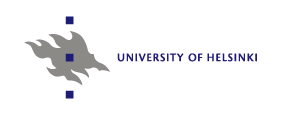- FIN-CLARIAH Research Infrastructure
A new national research infrastructure initiative FIN-CLARIAH for...
8.12.2021 8:12 by eahyvone - WarMemoirSampo published on December 3, 2021
A new “Sampo” application, “WarMemoirSampo”...
8.12.2021 8:04 by eahyvone - Five new SeCo papers accepted for the ISWC 2021
The 20th International Semantic Web Conference (ISWC 2021), the...
2.8.2021 6:53 by eahyvone
- Annastiina Ahola, Lilli Peura, Rafael Leal, Heikki Rantala and Eero Hyvönen: Using generative AI and LLMs to enrich art collection metadata for searching, browsing, and studying art history in Digital Humanities
- Eero Hyvönen, Petri Leskinen, Alexandre Lionnet, Blandine Blukacz-Louisfert, Pierre-Etienne Bourneuf, Davide Rodogno, Grégoire Mallard, and Florian Cafiero: Linked Open Data Approach to Study the Assembly Minutes of International Organizations and Their Underlying Prosopography in the Real World Context
- Eero Hyvönen, Petri Leskinen, Alexandre Lionnet, Blandine Blukacz-Louisfert, Pierre-Etienne Bourneuf, Davide Rodogno, Grégoire Mallard, and Florian Cafiero: A Linked Open Data Infrastructure for Studying Historical Activities of International Organizations: First Results on the League of Nations (1920-1946)
- Petri Leskinen, Eero Hyvönen, Alexandre Lionnet, Blandine Blukacz-Louisfert, Pierre-Etienne Bourneuf, Davide Rodogno, Grégoire Mallard, and Florian Cafiero: A Linked Open Data Service and Semantic Portal to Study the Assembly Minutes and Prosopography of the League of Nations (1920–1946)
The Finnish General Upper Ontology YSO
The aim of this part of the FinnONTO project is to build the Finnish General Upper Ontology YSO based on the widely used Finnish General Thesaurus maintained by The National Library of Finland. The idea is that The Finnish General Ontology with ca. 20 000 concepts could be “the semantic glue” between many domain ontologies and this way offer a possibility to link contents from different domains in the Finnish semantic web.
In the FinnONTO project The Finnish General Upper Ontology will be used for example in the health information portal TerveSuomi.fi and in the cultural heritage portal Kulttuurisampo.fi.
YSO-ontology can be used and integrated with a client application by using the ONKI Ontology Server.Contact:
Researcher Katri SeppäläHelsinki University of Technology, Media Technology Laboratory and The Finnish Terminology Centre TSK
katri.seppala [at] tkk.fi
Professor Eero Hyvönen
Helsinki University of Technology, Media Technology Laboratory and University of Helsinki
eero.hyvonen [at] tkk.fi
in Finnish:
Yleinen suomalainen ontologia (YSO)
Tämän FinnONTO-projektin osahankeen tavoitteena on kehittää laajassa käytössä olevan Kansalliskirjaston Yleisen suomalaisen asiasanaston (YSA) pohjalta Yleinen suomalainen ontologia (YSO). Ajatuksena on, että noin 20 000 käsitteestä koostuva YSO voisi muodostaa "semanttisen liiman" eri alakohtaisten ontologioiden välillä ja näin tarjota mahdollisuuksia yhdistää eri alojen sisältöjä suomalaisessa semanttisessa webissä.
YSO:a sovelletaan FinnONTO-projektissa esimerkiksi terveyden edistämisen TerveSuomi.fi-portaalissa ja kulttuurialan Kulttuurisampo-portaalissa.
YSO-ontologia on käytettävissä ja kytkettävissä asiakassovellusten osaksi ONKI-ontologiapalvelimen avulla.Lisätietoja:
Tutkija Katri Seppälä
Teknillinen korkeakoulu, Viestintätekniikka ja Sanastokeskus TSK
katri.seppala [at] tkk.fi
Professori Eero Hyvönen
Teknillinen korkeakoulu, Viestintätekniikka ja Helsingin yliopisto
eero.hyvonen [at] tkk.fi


